Subtotal: £7.74
6 x Blackline Tail Tetra (Moenkhausia costae) 6 fish, Beautiful Schooling Fish for Tropical Freshwater Aquariums, Enhance Your Fish Tank with Colorful Companions That Thrive, Thriving Community Members for a Harmonious Aquarium
£49.49 Original price was: £49.49.£42.00Current price is: £42.00.
Welcome these beautiful 6 x Blackline Tail Tetra (Moenkhausia costae) into your aquarium. Their vibrant colors and graceful movements make them stunning community members. Perfect for aquarists seeking peaceful companions, these colorful fish thrive in well-maintained tropical freshwater environments.
Species Introduction
The Blackline Tail Tetra, scientifically known as Moenkhausia costae, is a captivating species of freshwater fish native to the tranquil waters of South America. Found predominantly in the Amazon River basin, these fish thrive in slow-moving streams and rivers rich in aquatic vegetation. Their natural habitat features a variety of submerged structures, including fallen branches and dense plant life, which provide them with both shelter and foraging opportunities. The Blackline Tail Tetra is renowned for its striking coloration, characterized by a sleek body adorned with a distinctive black line running along its tail, complemented by vibrant shades of blue and silver. This beautiful fish is not only a visual delight but also plays a crucial role in its ecosystem, contributing to the balance of its aquatic environment.
Care Requirements Dashboard
Essential Care Guide for Your Blackline Tail Tetra
| Optimal Living Conditions | |
|---|---|
| Water Temperature | 24-27°C (75-81°F) |
| pH Level | 6.5-7.5 |
| Water Hardness | 4-12 dKH |
| Minimum Tank Size | 80L (20 gal) |
| Salinity | Freshwater |
| Care Level | Beginner Friendly |
✓ Care Level: Easy
To provide a suitable home for your Blackline Tail Tetras, a minimum tank size of 20 gallons is recommended. This allows ample swimming space for these active schooling fish. The water parameters should be maintained within a pH range of 6.0 to 7.5, with a temperature between 72°F to 82°F (22°C to 28°C). Regular water changes of 10-15% weekly will help maintain optimal water quality, ensuring a healthy environment for your aquatic companions. Additionally, the use of a good filtration system is essential to keep the water clean and well-oxygenated. The Blackline Tail Tetra thrives in well-planted tanks with plenty of hiding spots, making it an ideal candidate for community tanks.
Natural Behavior & Temperament
The Blackline Tail Tetra is known for its peaceful demeanor and sociable nature, making it an excellent addition to community tanks. These fish are highly social and thrive when kept in groups of six or more, exhibiting fascinating schooling behavior that creates a dynamic and lively display in your aquarium. They are active swimmers, often seen darting around the tank, exploring their surroundings, and interacting with one another. Their natural instinct to school not only enhances their well-being but also provides a sense of security, as they feel safer in numbers. Observing their interactions can be a delightful experience, as they engage in playful displays and establish a hierarchy within their group. This species is generally non-aggressive, but it’s essential to avoid pairing them with overly aggressive tank mates, as this can lead to stress and health issues.
Tank Setup Guide
Creating a suitable environment for your Blackline Tail Tetras involves replicating their natural habitat as closely as possible. Start with a substrate of fine gravel or sand, which mimics the riverbeds they are accustomed to. Incorporate plenty of live plants, such as Java Fern, Anubias, and Amazon Sword, to provide hiding spots and foraging opportunities. Floating plants can also help diffuse lighting and create a more natural feel. Additionally, include driftwood and rocks to create structure and hiding places, which will help reduce stress levels in your fish. Ensure that the tank is well-lit but not overly bright, as these fish prefer a slightly dimmed environment. A gentle water flow is ideal, as they are not strong swimmers. Regularly rearranging decorations can also stimulate their curiosity and encourage natural behaviors.
Water Quality Management
Maintaining high water quality is crucial for the health and longevity of your Blackline Tail Tetras. The ideal pH range for these fish is between 6.0 and 7.5, with a temperature range of 72°F to 82°F (22°C to 28°C). Regular testing of water parameters using a reliable test kit is essential to ensure that conditions remain stable. Ammonia and nitrite levels should always be at 0 ppm, while nitrate levels should be kept below 20 ppm. Perform regular water changes of 10-15% weekly to help maintain water quality and remove any accumulated waste. Additionally, using a high-quality filtration system will aid in keeping the water clean and well-oxygenated. Be mindful of any sudden changes in water parameters, as these can stress your fish and lead to health issues.
Feeding & Nutrition
Important Feeding Note
Blackline Tail Tetras are omnivorous and thrive on a varied diet that includes high-quality flake food, micro-pellets, and live or frozen foods such as brine shrimp, daphnia, and bloodworms. It is essential to provide a balanced diet to ensure optimal health and coloration. Feed them small amounts two to three times a day, only what they can consume in a few minutes to prevent overfeeding and maintain water quality. Incorporating vegetable matter, such as spirulina flakes or blanched spinach, can also be beneficial for their health. Regularly monitor their feeding habits and adjust portions accordingly, as some individuals may be more dominant and compete for food. Observing their feeding behavior can also provide insights into their health and well-being.
Compatibility Guide
When considering tank mates for your Blackline Tail Tetras, it is important to choose peaceful species that share similar water parameter requirements. Ideal companions include other small, non-aggressive fish such as Neon Tetras, Corydoras Catfish, and Guppies. Avoid larger or aggressive species that may intimidate or harm your Tetras. Additionally, keeping them in groups of six or more will help reduce stress and promote natural schooling behavior. This species can coexist well in a community tank, provided that the overall dynamics are harmonious. Regularly observe tank interactions to ensure that all fish are comfortable and healthy. If any signs of aggression or stress are noted, it may be necessary to rearrange tank mates or provide additional hiding spots.
Health & Wellness
Maintaining the health and wellness of your Blackline Tail Tetras requires regular observation and proactive care. Common health issues include ich, fin rot, and stress-related ailments. It is crucial to monitor your fish for any signs of illness, such as changes in behavior, loss of appetite, or physical abnormalities. Maintaining optimal water quality is the first line of defense against disease, as poor conditions can lead to stress and susceptibility to illness. If any fish appear sick, it is advisable to isolate them in a hospital tank to prevent the spread of disease. Regularly check for any signs of parasites or fungal infections, and consult with a knowledgeable aquarist or veterinarian if any health issues arise. Prevention is key, and providing a stable, clean environment will go a long way in keeping your fish healthy.
Breeding Information
Breeding Blackline Tail Tetras can be a rewarding experience for aquarists. To encourage breeding, it is best to set up a separate breeding tank with softer, slightly acidic water and plenty of fine-leaved plants for the eggs to adhere to. Condition the breeding pair with high-quality foods, including live or frozen options, to stimulate spawning behavior. Once the female is ready to spawn, she will lay eggs on the plant leaves, and the male will fertilize them. After spawning, it is advisable to remove the parents from the breeding tank, as they may eat the eggs. The eggs typically hatch within 24 to 36 hours, and the fry will become free-swimming after a few days. Feed them infusoria or finely crushed flakes until they are large enough to consume regular food. Regular water changes and maintaining stable conditions are essential for the successful rearing of fry.
Acclimation Process
Acclimating your Blackline Tail Tetras to their new home is a crucial step in ensuring their health and well-being. Begin by floating the sealed bag containing the fish in the aquarium for about 15-20 minutes to equalize the temperature. After this, gradually introduce small amounts of tank water into the bag over the course of an hour, allowing the fish to adjust to the new water parameters. This slow acclimation process helps reduce stress and prevents shock. Once acclimated, gently release the fish into the tank using a net to avoid adding any transport water that may contain harmful substances. Monitor their behavior closely for the first few days to ensure they are adjusting well to their new environment.
Long-term Care
Blackline Tail Tetras can live for several years with proper care, typically ranging from 3 to 5 years in a well-maintained aquarium. As they grow, it is essential to monitor their health and adjust their diet and tank conditions accordingly. Regular water changes and maintenance will help prevent the buildup of harmful toxins and promote a healthy environment. Keep an eye on their growth and behavior, as any significant changes may indicate underlying issues. Providing a varied diet, stable water conditions, and a peaceful community will contribute to their longevity and overall well-being. Additionally, consider the tank size as they mature, ensuring they have enough space to thrive.
Natural Habitat Recreation
To recreate the natural habitat of the Blackline Tail Tetra, focus on creating a biotope that reflects their native environment. Incorporate a variety of plants, including floating and rooted species, to mimic the dense vegetation found in their natural waters. Use driftwood and rocks to create hiding spots and territories, allowing the fish to feel secure. The substrate should be soft and natural, resembling the riverbeds where they originate. Additionally, consider adding leaf litter to the substrate, which can provide both food and cover for the fish. Maintaining a slightly dimmed lighting setup will help replicate the shaded conditions of their natural habitat, promoting a sense of security and comfort for your aquatic companions.
Seasonal Care Adjustments
As seasons change, so too can the conditions in your aquarium. During warmer months, ensure that the water temperature does not exceed the upper limits of the ideal range for Blackline Tail Tetras. This may require adjusting your filtration system or adding fans to maintain cooler temperatures. Conversely, during colder months, consider using a heater to maintain a stable temperature. Additionally, monitor the water parameters regularly, as fluctuations can occur with seasonal changes. Adjust your feeding schedule based on the activity levels of your fish, as they may eat more during warmer months and less when temperatures drop. Regular maintenance and observation will help ensure that your Tetras remain healthy and thriving throughout the year.
Expert Tips
For those looking to enhance their experience with Blackline Tail Tetras, consider the following expert tips. First, maintaining a varied diet is crucial for their health and coloration. Incorporate high-quality flake foods, live foods, and vegetable matter to ensure they receive a balanced diet. Secondly, ensure that the tank is well-planted and provides ample hiding spots, as this will help reduce stress and promote natural behaviors. Regularly observe your fish for signs of stress or illness, and be proactive in addressing any issues. Lastly, consider joining local aquarium clubs or online forums to connect with other aquarists who share your passion for these beautiful fish. Sharing experiences and knowledge can enhance your understanding and care for your aquatic companions.
Troubleshooting
If you encounter issues with your Blackline Tail Tetras, it is essential to address them promptly. Common problems include stress due to aggressive tank mates, poor water quality, or inadequate hiding spots. If your fish are displaying signs of stress, such as hiding excessively or showing aggressive behavior, consider rearranging the tank or providing additional cover. Additionally, if you notice any signs of illness, such as white spots, frayed fins, or lethargy, it may be necessary to isolate affected fish and treat them in a hospital tank. Regular water testing and maintenance will help prevent many common issues, ensuring a stable environment for your fish. Always consult with knowledgeable sources or professionals if you are uncertain about how to address specific problems.
Scientific Background
The Blackline Tail Tetra belongs to the family Characidae, which encompasses a diverse group of freshwater fish commonly referred to as tetras. Within this family, Moenkhausia costae is recognized for its unique coloration and peaceful temperament. Scientific studies have focused on the ecological roles of tetras in their native habitats, highlighting their importance in maintaining the balance of aquatic ecosystems. Conservation efforts are essential to protect their natural environments, as habitat destruction and pollution pose significant threats to their populations. Understanding the biology and ecology of Blackline Tail Tetras can help aquarists provide better care and contribute to conservation initiatives.
Advanced Care Techniques
For experienced aquarists looking to enhance their care for Blackline Tail Tetras, consider implementing advanced techniques such as breeding programs or biotope aquariums. Establishing a breeding program requires careful selection of healthy breeding pairs and a dedicated breeding setup that mimics their natural spawning conditions. Additionally, creating a biotope aquarium that accurately reflects their native habitat can provide a more enriching environment for your fish. Incorporate natural materials, such as leaf litter and organic substrates, to create a dynamic ecosystem that supports both the fish and the plants. Regularly engage in research and experimentation to discover new ways to enhance the health and happiness of your aquatic companions.
Water Quality Parameters
Optimal Range
24-27°C
6.5-7.5
0 ppm
Caution Zone
22-24°C or 27-29°C
6.0-6.5 or 7.5-8.0
0.25-0.5 ppm
Danger Zone
<22°C or >29°C
<6.0 or >8.0
>0.5 ppm
Monitoring Tip: Test water parameters weekly and perform regular water changes to maintain optimal conditions for your aquatic friends!
Frequently Asked Questions
Q: What tank size is required for Blackline Tail Tetras?
Blackline Tail Tetras thrive best in a tank of at least 60 litres (15 gallons) as they are active swimmers and prefer ample space. A larger tank allows for a more stable environment and better water quality management. It is advisable to provide a school of at least six individuals, as they are social creatures and feel more secure in groups. Ensure the tank is well-planted with open swimming areas to mimic their natural habitat, which can enhance their overall well-being and reduce stress.
✓ Expert Tip
Consider adding floating plants to provide shade and cover, which can make your tetras feel more secure.
Q: What water parameters do Blackline Tail Tetras require?
For optimal health, Blackline Tail Tetras prefer slightly acidic to neutral water, with a pH range of 6.0 to 7.5. The water hardness should be kept between 2-15 dGH, and the temperature should ideally be maintained between 22°C to 28°C (72°F to 82°F). Regular testing of water parameters is essential, as fluctuations can stress these fish. Using a high-quality water conditioner can help in maintaining stable parameters, ensuring a healthy environment for your aquatic companions.
✓ Expert Tip
Consider using a reliable filtration system to help maintain water clarity and quality.
Q: How often should I feed Blackline Tail Tetras?
Blackline Tail Tetras should be fed small amounts two to three times a day. A varied diet including high-quality flake food, micro-pellets, and occasional live or frozen foods like brine shrimp or daphnia can provide balanced nutrition. It is important not to overfeed, as excess food can lead to water quality issues. Monitor their feeding habits and adjust portions accordingly to ensure that all fish are getting enough food without leaving waste behind.
✓ Expert Tip
Introduce variety in their diet to enhance their colouration and overall health.
Q: What are the best tank mates for Blackline Tail Tetras?
Blackline Tail Tetras are generally peaceful and can coexist well with other small to medium-sized community fish. Ideal tank mates include rasboras, other tetras, and small catfish. Avoid aggressive species or larger fish that may view them as prey. Creating a balanced community by selecting compatible species will enhance the overall harmony of your aquarium, allowing these lovely tetras to thrive and display their natural behaviour.
✓ Expert Tip
Observe interactions between species closely during the initial introduction to ensure compatibility.
Q: How do I properly acclimatise Blackline Tail Tetras to my aquarium?
Acclimatisation is crucial for the health of Blackline Tail Tetras. Begin by floating the sealed bag in your aquarium for about 15 minutes to equalise the temperature. Then, gradually introduce small amounts of aquarium water into the bag every 5 minutes for about an hour. This process helps the fish adjust to the new water conditions. Once acclimatised, gently release the tetras into the tank without adding the bag water to avoid introducing contaminants.
✓ Expert Tip
Using a quarantine tank for new arrivals can further reduce stress and disease transmission.
Q: What are the signs of healthy Blackline Tail Tetras?
Healthy Blackline Tail Tetras exhibit vibrant colours, clear eyes, and active swimming behaviour. They should display a natural curiosity, exploring their environment and interacting with tank mates. Signs of distress include lethargy, faded colours, or abnormal swimming patterns. Regular monitoring of their behaviour and physical appearance is essential in identifying potential health issues early, allowing for prompt intervention if necessary.
✓ Expert Tip
Keep an eye on their eating habits; loss of appetite can be an early sign of health problems.
Q: How do I successfully breed Blackline Tail Tetras?
Breeding Blackline Tail Tetras can be achieved in a well-maintained aquarium with soft, slightly acidic water. Provide a separate breeding tank with fine-leaved plants where the females can lay eggs. After spawning, remove the adults to prevent them from eating the eggs. The eggs typically hatch within 24-36 hours, with fry becoming free-swimming after a few days. Feed them infusoria or finely crushed flakes until they can consume larger food.
✓ Expert Tip
Maintaining a stable environment during breeding is crucial for the survival of fry.
Q: What temperature should I maintain for Blackline Tail Tetras?
The ideal temperature range for Blackline Tail Tetras is between 22°C to 28°C (72°F to 82°F). Maintaining a consistent temperature within this range is essential for their health and behaviour. Sudden fluctuations can lead to stress and increase susceptibility to disease. A reliable aquarium heater and thermometer can help manage and monitor the water temperature effectively.
✓ Expert Tip
Avoid placing the tank in direct sunlight to prevent temperature spikes.
Q: How long do Blackline Tail Tetras typically live in captivity?
With proper care, Blackline Tail Tetras can live for 5 to 8 years in captivity. Providing a stable environment, appropriate diet, and regular maintenance can significantly impact their lifespan. Monitoring water quality and keeping the tank clean are crucial for preventing diseases that could shorten their life. Regular health checks and prompt attention to any issues can help ensure your aquatic companions thrive for many years.
✓ Expert Tip
Keeping stress levels low is key to promoting longevity in your fish.
Q: What type of substrate is most suitable for Blackline Tail Tetras?
Blackline Tail Tetras prefer a soft substrate that mimics their natural environment. Fine gravel or sand is ideal, as it allows them to forage naturally without damaging their delicate fins. Additionally, a darker substrate can enhance the vibrant colours of these tetras, creating a stunning visual effect in your aquarium. Avoid sharp-edged substrates that could injure their bodies during swimming or foraging.
✓ Expert Tip
Incorporate plants and decorations to create hiding spots and enhance their comfort.
Q: What behavioural patterns should I expect from Blackline Tail Tetras?
Blackline Tail Tetras are known for their active and social behaviour. They enjoy swimming in schools, which not only provides security but also stimulates natural behaviour. They are generally peaceful, often exploring their environment and interacting with tank mates. Occasionally, you may observe playful chasing amongst themselves, which is normal as part of their social dynamics. Providing ample swimming space and hiding spots will encourage their natural behaviour and reduce stress.
✓ Expert Tip
Monitor their interactions to ensure healthy social dynamics within the school.
Q: How can I prevent common diseases in Blackline Tail Tetras?
Preventing diseases in Blackline Tail Tetras involves maintaining optimal water quality and a stress-free environment. Regular water changes, proper filtration, and monitoring of parameters are essential. Quarantine new fish before introducing them to the main tank to prevent the spread of pathogens. Additionally, providing a varied and nutritious diet will strengthen their immune system. Pay attention to any signs of illness and act promptly, as early intervention can make a significant difference.
✓ Expert Tip
Keep a close eye on tank mates, as stress can lead to disease outbreaks.
Q: What lighting conditions do Blackline Tail Tetras prefer?
Blackline Tail Tetras prefer moderate lighting, which mimics their natural habitat. Bright lighting can cause stress, so it is advisable to use subdued lighting or floating plants to create shaded areas. This helps in making them feel secure and encourages natural behaviours. Additionally, providing a light cycle with 10-12 hours of light followed by darkness can help maintain a healthy environment for your aquatic companions.
✓ Expert Tip
Use a timer for consistent light cycles to promote a healthy routine.
Q: How do I recognise stress in Blackline Tail Tetras?
Recognising stress in Blackline Tail Tetras can be crucial for their welfare. Signs of stress may include erratic swimming, hiding excessively, or loss of colour vibrancy. Additionally, if they are not feeding or displaying aggressive behaviour towards tank mates, it may indicate stress levels. Monitoring their environment regularly and ensuring stable water parameters can help mitigate stressors and promote a healthy, thriving school.
✓ Expert Tip
Create a well-planted environment to provide hiding spaces and reduce stress.
Q: What natural habitat conditions should I replicate for Blackline Tail Tetras?
To create a suitable habitat for Blackline Tail Tetras, replicate the conditions of their native South American rivers, which are often slow-moving with soft, slightly acidic water. Incorporating plants, driftwood, and leaf litter can provide shelter and mimic their natural environment. Maintain a well-planted tank with open swimming areas, and ensure the water is clean and well-filtered to promote a healthy ecosystem. Regular maintenance will help keep these conditions stable.
✓ Expert Tip
Utilising natural materials not only enhances aesthetics but also improves fish comfort.


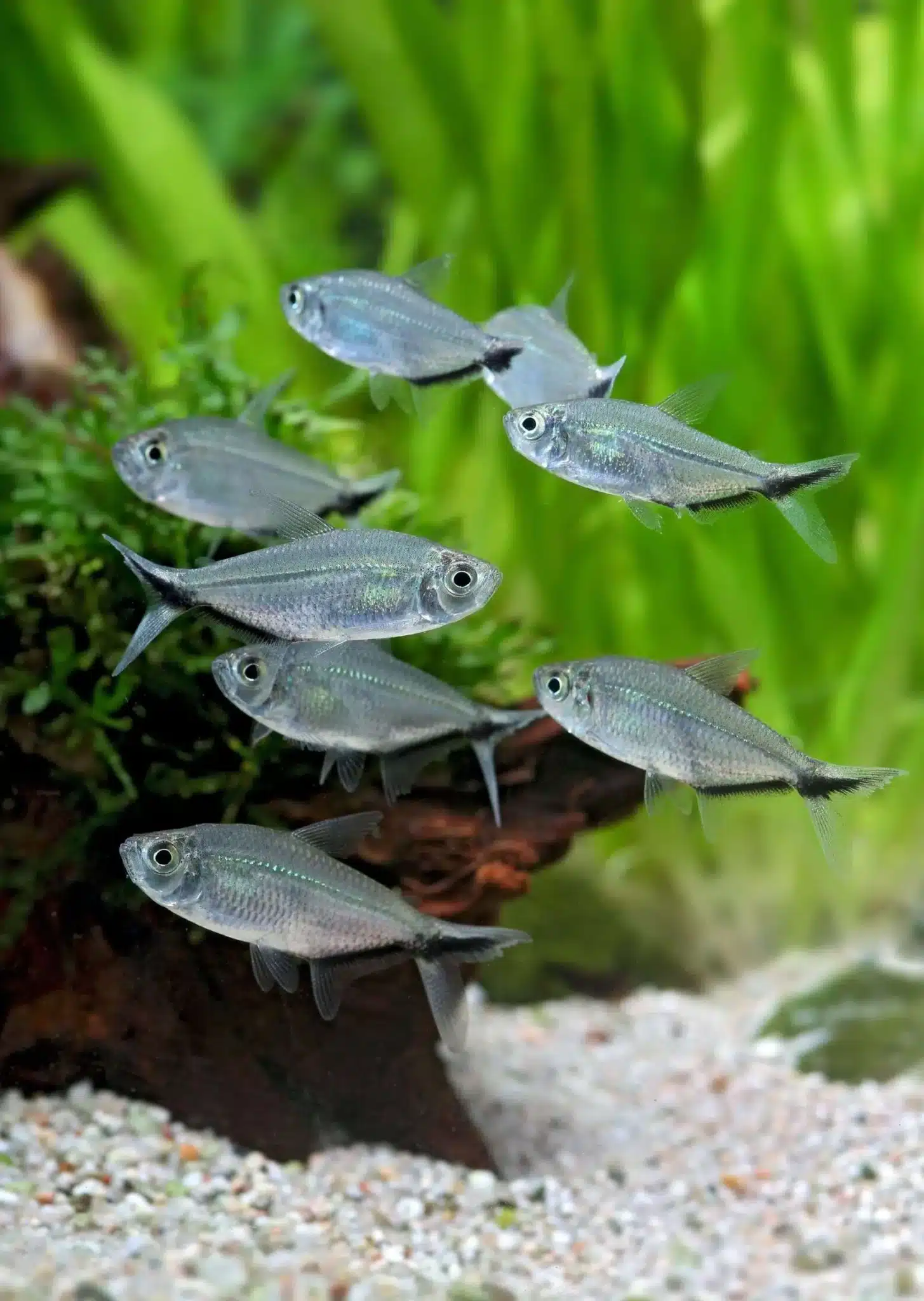
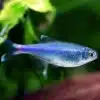
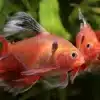

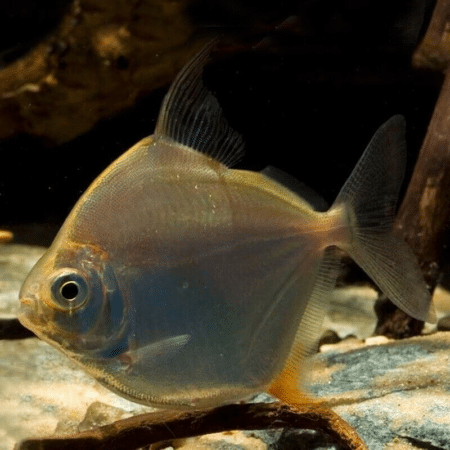






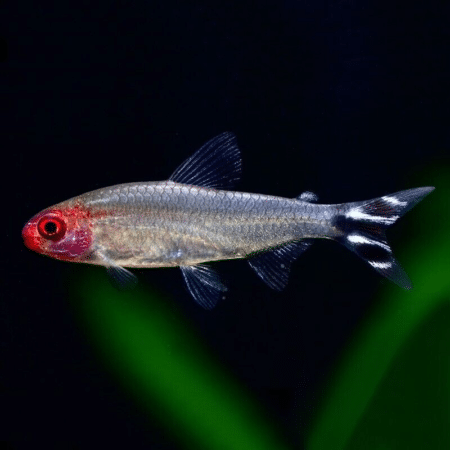


Emily Carter (verified owner) –
I recently added 6 Blackline Tail Tetras (Moenkhausia costae) to my 55-gallon aquarium, and I couldn’t be happier with my choice! After a week of watching them adjust, it’s clear they thrive in a peaceful community setup alongside my neon tetras. Their shimmering tails and subtle blackline markings are a stunning contrast against the green plants I have.
From day one, these freshwater fish have been active and playful, darting around with such grace. They really bring my tank to life! I appreciate that they stay small, around 2 inches, making them perfect for my setup. Compared to other tetras I’ve kept, these have a unique charm thanks to their distinctive appearance and behavior.
The shipping was quick, and they arrived healthy and full of energy, which speaks volumes about the seller’s care for fish welfare. One minor concern is that they can be a bit shy initially; providing plenty of hiding spots helped them acclimate faster.
I highly recommend the Blackline Tail Tetra for anyone looking to enhance their community aquarium. They’re particularly great for both beginners and experienced hobbyists who want to add a splash of color and movement. I can’t wait to see how they grow and interact over time!
Emily Thompson (verified owner) –
I recently added 6 Blackline Tail Tetras (Moenkhausia costae) to my 55-gallon tropical freshwater aquarium, and I couldn’t be happier! These little beauties are absolutely stunning, showcasing vibrant colors and that gorgeous black line on their tails really makes them stand out against the lush plants. After about two weeks of observation, they’ve bonded beautifully and swim together as a tight-knit school, bringing so much life to the tank.
What I love most is how peaceful they are, making them suitable companions for my other freshwater fish, including neon tetras and guppies. It’s heartwarming to see them thrive and exhibit natural behaviors in their environment. One minor concern was that they took a little time to adjust initially, but that’s typical with any new addition, right?
If you’re a caring fish parent or just starting out, I highly recommend these tetras for their beauty and friendly nature. They really elevate the aesthetics of the aquarium, and I can’t wait to see them grow! Just ensure you provide plenty of space and plants for them to explore. I would definitely buy more in the future!